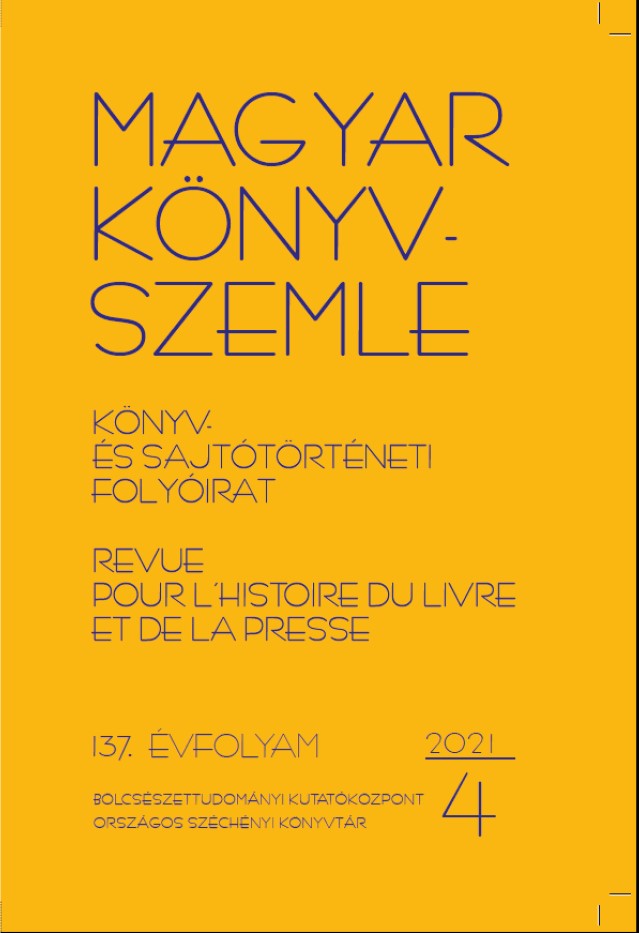Is it the death of Stephen I of Hungary or of Skanderbeg in the 1581 edition of Antonio Bonfini’s Rervm Vngaricarvm Decades?
Multiple use of book illustrations by Sigmund Feyerabend in his press in Frankfurt
Abstract
The book publisher Sigmund Feyerabend, who worked in Frankfurt around 1560–1580, occasionally used illustrations from both his own books and the books of other publishers to decorate his publications. For example, using the engraving compositions of Hans Francolin’s Thurnierbuch, published in Latin and German in Vienna in 1561, he commissioned woodcuts from Jost Amman, which he used in both his own edition of Francolin’s book in 1566 and later in several other publications. Feyerabend also took illustrations from his own previous publications. In 1581, he published in German the Hungarian Chronicle (Rerum Hungaricarum decades) written by Antonio Bonfini, the court historian of King Matthias and Vladislaus II of Hungary, in the end of the 15th century, adding an illustration before each of the 45 chapters. Although the older and more recent Hungarian studies of the history of books and art history interpreted these images as direct illustrations of historical events in Hungary, early examples of Hungarian historical depictions, the vast majority of these images were actually also included in Feyerabend’s earlier books about different
topics (ancient history, Turkish chronicles, publications about warfare, books about knightly tournaments etc.). It is noteworthy, however, that Feyerabend used the images not merely as decorations. He made sure that, knowing the text of the chronicle, the content of the woodcut in front of the chapters was connected to one of the interesting, unique, characteristic events in the text. For example, in the chapter about the cruel assassination of Ladislaus IV of Hungary by his beloved Cumans, Feyerabend published a picture which was originally included in Titus Livius’s book
about the history of Rome, which depicts the assassination of a man lying on the ground. Feyerabend therefore sought a kind of unique, partial authenticity with a modern approach, since for the reader the images accurately illustrated what was described in that particular passage, even though the image did not originally illustrate that event.



